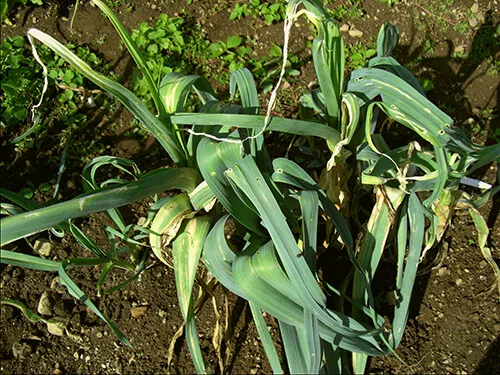The leek moth larva is a small, leaf-mining caterpillar. The first generation (May-June) feeds on the leaves. The worst damage is done by the second generation (July-August) as it continues to damage emerging leaves and moves towards the bulb.
Feeding damage stunts plant growth, introduces rot and can compromise the storage life of onions and garlic. In New York leek moth populations have been found in onions, garlic and leeks.

Where to Look on Various Crops
Fact Sheets
Body
- Leek Moth Fact Sheet 2022 (PDF) — University of Vermont Extension
- Leek Moth Fact Sheet 2011 (PDF) — Cornell Cooperative Extension
- Leek Moth — A Pest of Allium Crops (revised August 2009)
Training Materials
Body
- Leek Moth: Background, Biology, and Occurrence
- Leek Moth Damage Examples.